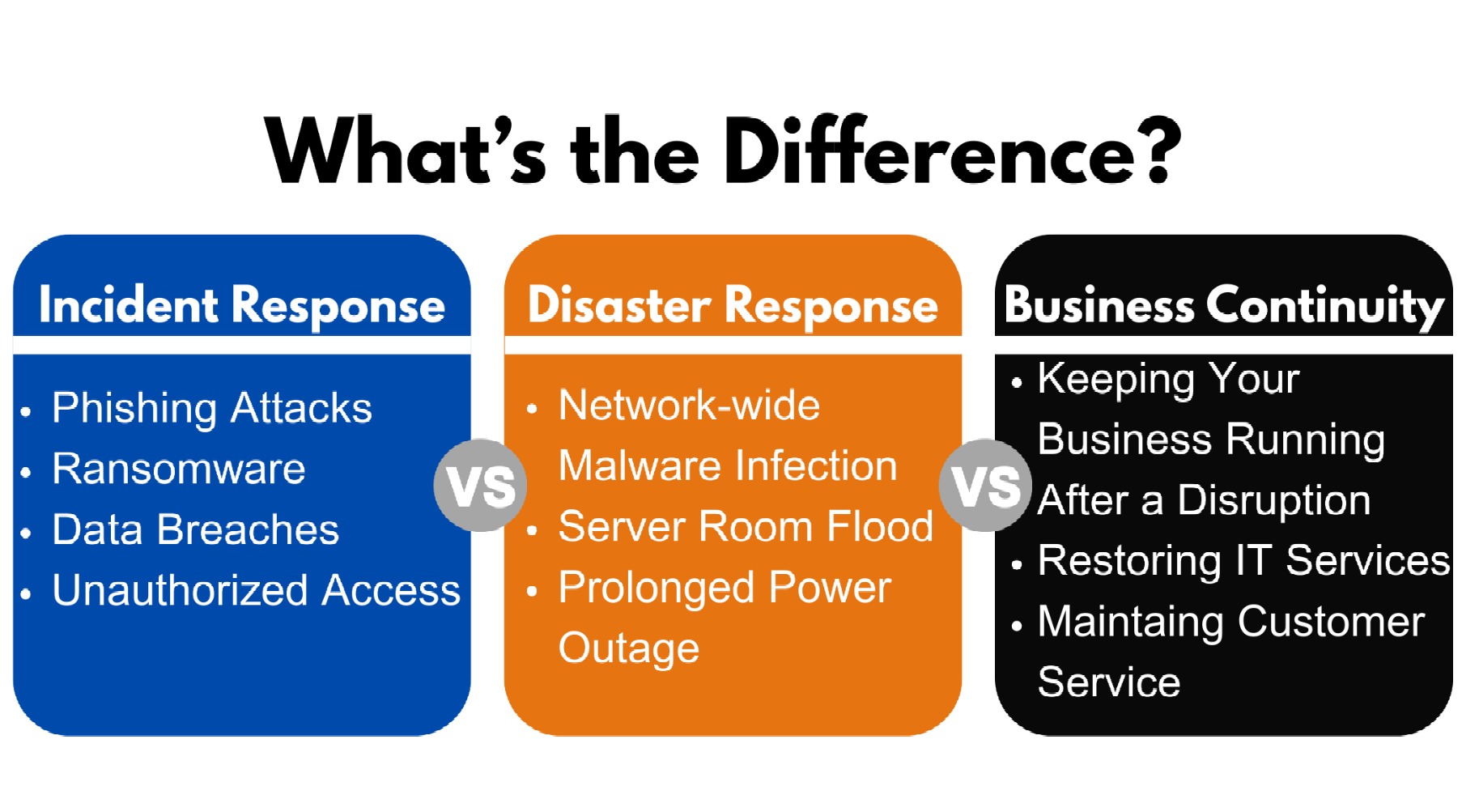August 28, 2025
Imagine arriving at work on an otherwise normal day, only to discover the worst-case scenario: your network has been hacked, and the cyber threat is demanding a ransom to get your data back. Although that situation may be too frightening to even think about, that doesn't mean you shouldn't plan on how you'd react, respond and recover.
Perhaps it's easier to picture a different kind of disruption: your most critical third-party business application has been compromised and forced offline (think about your payroll and accounting platforms, enterprise resource planning, or customer relationship management). This type of outage isn't far-fetched. In fact, the 2024 CDK Global hack shut down car dealerships' sales, service, and financial operations nationwide for weeks and led to an estimated $25 million ransom payout.
In today's digital landscape, nearly every element of smooth business operations depends on online connectivity. It's critical for not just IT leaders, but business owners and executive teams to have strong incident response, disaster recovery and business continuity plans in place.

Incident Response vs. Disaster Recovery vs. Business Continuity: What's the Difference?
While these plans work hand-in-hand, each serves distinct roles in protecting your business:
Incident Response Plan (IRP): Focuses on managing and containing specific security events as they happen (ex., phishing attacks, ransomware, data breaches, or unauthorized access). It's about taking immediate, well-coordinated action to minimize damage, investigate the cause and prevent the incident from escalating. IRPs are often used by trained response teams and detail step-by-step procedures for identification, containment, eradication and recovery.
Disaster Recovery Plan (DRP): Focuses on restoring your business after a major disruption. These disruptions could be cyber-related, like a network-wide malware infection, or physical, like a server room flood or prolonged power outage. A DRP addresses how to restore critical systems, data and business functions across the organization as quickly as possible.
Business Continuity Plan (BCP): A broader strategy that outlines how your organization will continue operating during and after a disruption. While a DRP focuses on restoring IT systems and data, a BCP covers all aspects of keeping the business running, from maintaining customer service and supply chains to ensuring essential staff and processes remain operational.
Think of it this way: the IRP is your playbook for putting out the fire, the DRP is your plan for rebuilding the house, and the BCP is the strategy for making sure life and business go on while the rebuilding happens.
A truly resilient organization has all three, working together to minimize downtime and protect revenue, reputation and compliance.
The High Cost of Not Having a Plan
With over 55 years of industry experience, ET&T has seen firsthand how even a brief disruption can create a ripple effect that impacts revenue, productivity, and long-term trust. Without a plan, businesses face:
- Financial Loss: Extended downtime can lead to significant revenue loss.
- Operational Downtime: Critical systems may be unavailable, halting operations entirely.
- Reputational Damage: Clients and partners may lose confidence in your ability to manage risk.
- Regulatory Non-Compliance: Failure to meet industry-specific regulations can result in fines and legal consequences.
Businesses that collaborate with ET&T gain a partner who understands their infrastructure, anticipates vulnerabilities and offers around-the-clock support when it matters most.
Anatomy of an Incident Response Plan
An effective IRP is structured, actionable, and tailored to your organization. It typically includes six core sections:
- Preparation: Define clear roles and responsibilities, and provide staff with quality cybersecurity training.
- Identification: Assess whether an event is a cyber-attack, evaluate its intensity and classify the cybersecurity incident based on the nature of the attack.
- Containment: Isolate the affected systems and block the incident from spreading to other areas.
- Eradication: Investigate the root cause of the incident, making sure the threat is no longer present in the organization's network.
- Recovery: Restore the affected systems to their pre-incident state, enabling businesses to resume normal operations.
- Lessons Learned: Document everything that occurred during the incident and response. Use this information to identify areas for improvement in the organization's security and incident response plan.
ET&T's Approach to Resilient Recovery
At ET&T, we believe every business deserves a plan as unique as they are. Our approach blends proactive monitoring, fast response and long-term partnership:
Comprehensive Data Backup: Protecting your critical data from hardware failures, cyberattacks, and natural disasters.
24/7 Monitoring & Support: Around-the-clock visibility and a dedicated contact to guide you through incidents.
Tailored Recovery Plans: Strategies built around your infrastructure, risk exposure, and business continuity goals.
Regular Testing: Routine validation to ensure backups are fully recoverable.
Flexible Solutions: Cloud-based and on-premise options to fit your compliance and operational needs.
Partner with an IT Team That Speaks Your Language
Disasters happen. But with the right partner, recovery doesn't have to be painful. At ET&T, we speak the language of your business, not just tech jargon, helping you plan, protect and adapt with confidence.
Contact us today to schedule a complimentary IT consultation at 610-600-9716, or complete this form: https://www.et-t.com/discoverycall.



